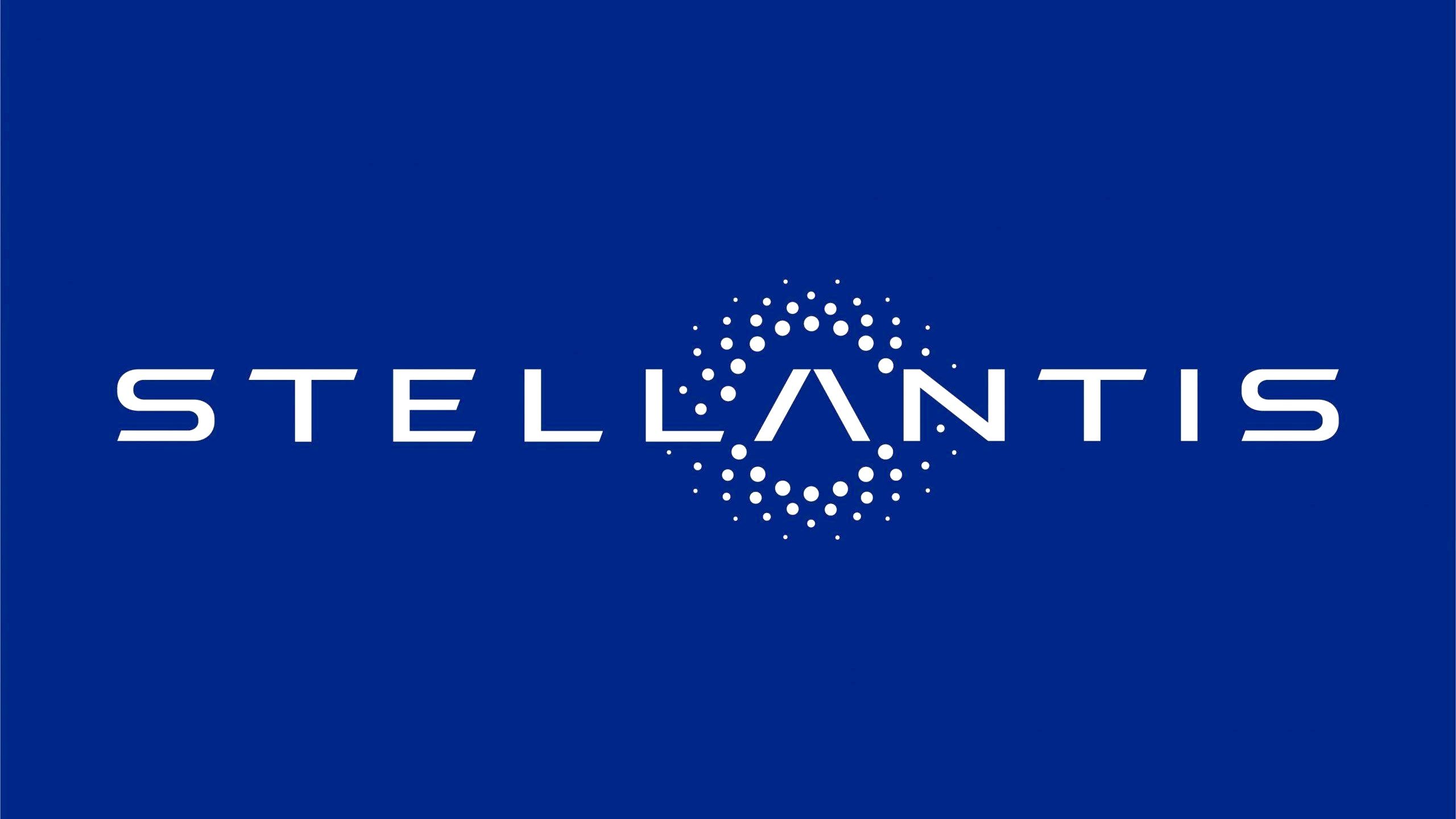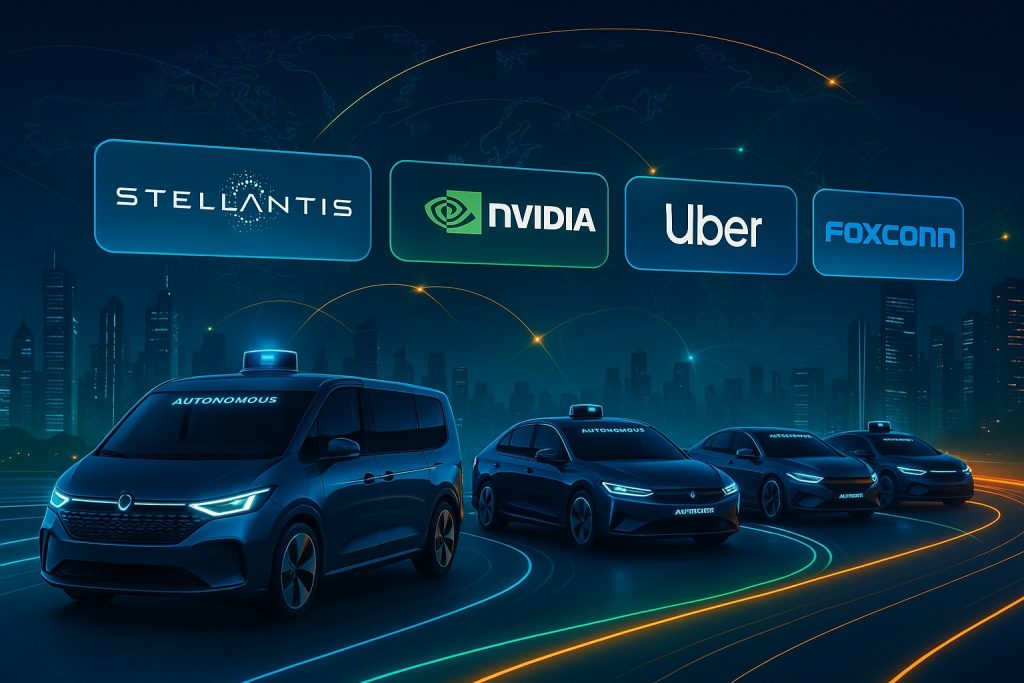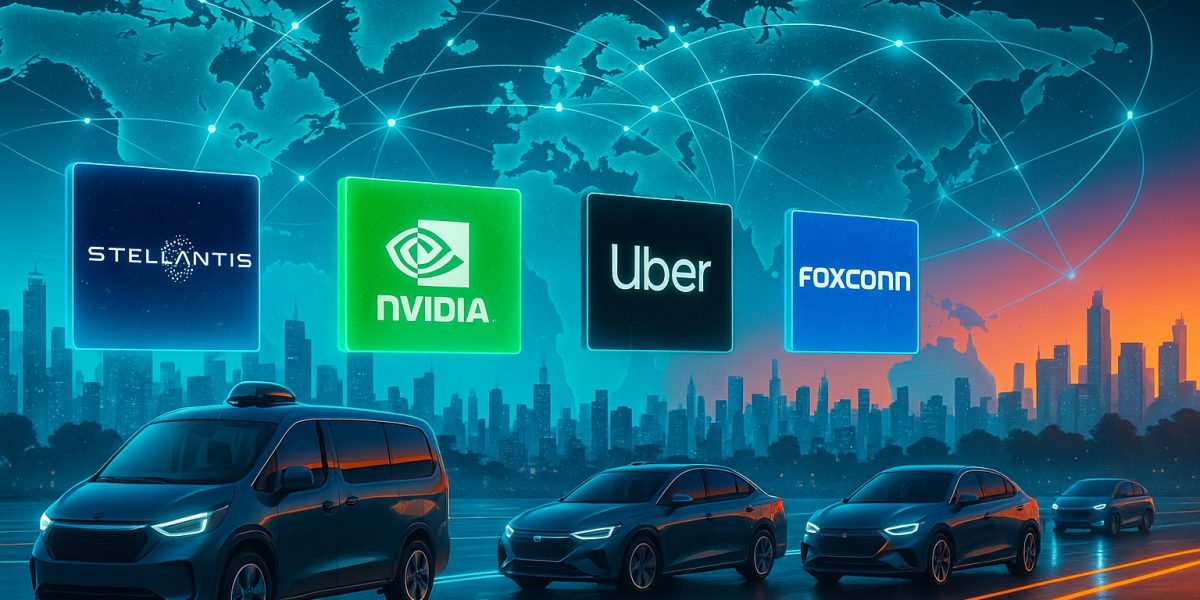Stellantis announced Monday a major collaboration with Nvidia, Uber, and Foxconn to develop and deploy Level 4 autonomous vehicles for robotaxi services worldwide. The partnership represents one of the most ambitious autonomous vehicle initiatives to date, with Uber planning to scale its robotaxi network to 100,000 vehicles starting in 2027.
Under the agreement, Stellantis will supply at least 5,000 self-driving vehicles to Uber beginning in 2028, with initial operations launching in the United States before expanding internationally. The vehicles will be built on Stellantis’ AV-Ready Platforms, specifically the K0 Medium Size Van and STLA Small, running on Nvidia’s recently introduced DRIVE AGX Hyperion 10 autonomous vehicle architecture.

How the Partnership Divides Responsibilities
The collaboration brings together core competencies from each company to create a comprehensive robotaxi solution. Stellantis will handle vehicle design, engineering, and manufacturing, while Nvidia provides its DRIVE AV software with Level 4 parking and driving capabilities. Foxconn will collaborate on hardware and system integration, while Uber manages robotaxi services with comprehensive fleet operations including remote support, charging, maintenance, and customer assistance.
“NVIDIA is the foundation of the AI era, and the company is now fully leveraging these innovations to launch L4 autonomy at massive scale,” said Dara Khosrowshahi, Uber’s CEO. Jensen Huang, Nvidia’s founder and CEO, called the partnership the foundation “for the entire industry to deploy autonomous fleets at scale.”
The division of labor makes strategic sense for each participant. Stellantis brings automotive manufacturing expertise and regulatory experience, Nvidia contributes the AI computing platform that powers autonomous decision-making, Foxconn adds electronics manufacturing and integration capabilities, and Uber provides the ride-hailing infrastructure and customer base. This compartmentalized approach allows each company to focus on its strengths while building toward a unified autonomous transportation system.
Industry Momentum and Technical Specifications
The announcement comes as the robotaxi industry demonstrates growing commercial momentum. Industry analysts forecast that by 2035, the global robotaxi fleet will exceed 900,000 vehicles across more than 100 cities worldwide, reaching a market valuation of $100 billion.
Nvidia’s DRIVE AGX Hyperion 10 platform features dual DRIVE AGX Thor systems-on-chip, delivering over 2,000 teraflops of FP4 real-time computing, along with a comprehensive sensor suite including 14 high-resolution cameras, nine radars, one lidar, and 12 ultrasonic sensors. This redundant sensor architecture addresses safety concerns by ensuring multiple systems can detect obstacles and hazards even if individual sensors fail.
The computational power represents a significant leap from earlier autonomous vehicle platforms. Processing 2,000 teraflops in real-time enables the vehicle to simultaneously track hundreds of objects, predict pedestrian and vehicle movements, plan optimal routes, and execute complex maneuvers—all while maintaining safety margins that exceed human driver capabilities.
Building on Existing Momentum
The collaboration builds on Stellantis’ recent partnership with Pony.ai to advance robotaxi development in Europe. Production is scheduled for 2028, with pilot programs expected to expand in coming years as companies work toward obtaining regulatory approvals and safety certifications.
Regulatory approval remains one of the biggest challenges facing autonomous vehicle deployment. Different jurisdictions maintain varying safety standards, testing requirements, and operational restrictions. Stellantis and its partners will need to navigate this complex regulatory landscape across multiple countries and demonstrate that their Level 4 system meets or exceeds local safety requirements.
The 2028 timeline for initial Stellantis vehicle deliveries suggests the companies are taking a measured approach rather than rushing to market. This allows time for extensive testing, regulatory engagement, and infrastructure development. Uber’s broader 100,000-vehicle target starting in 2027 indicates the company will initially use vehicles from other partners before Stellantis production ramps up.

Market Competition and Strategic Positioning
The partnership positions Stellantis to compete with other automakers pursuing autonomous mobility strategies. Waymo continues operating the most mature robotaxi service in several US cities, while Cruise recently resumed limited operations after regulatory challenges. Chinese companies including Baidu’s Apollo Go have deployed thousands of autonomous vehicles domestically.
Stellantis’ approach differs from competitors by focusing specifically on the ride-hailing use case through Uber’s established network rather than building a standalone service. This strategy leverages Uber’s existing customer base, operational infrastructure, and brand recognition while allowing Stellantis to concentrate on vehicle manufacturing rather than transportation service operations.
The 5,000-vehicle commitment represents a substantial but manageable initial deployment. At this scale, Stellantis can refine manufacturing processes, gather operational data, and address technical issues before committing to larger production volumes. If the partnership succeeds, expansion beyond the initial commitment seems likely given Uber’s ambitious 100,000-vehicle target.
Whether this collaboration successfully delivers on its promises will depend on technical execution, regulatory approvals, consumer acceptance, and economic viability. The 2028 launch timeline gives the partners several years to address these challenges, but also risks falling behind competitors who deploy sooner. The robotaxi race continues accelerating, and Stellantis has placed a significant bet on this four-way partnership as its path to autonomous vehicle leadership.




Post a comment